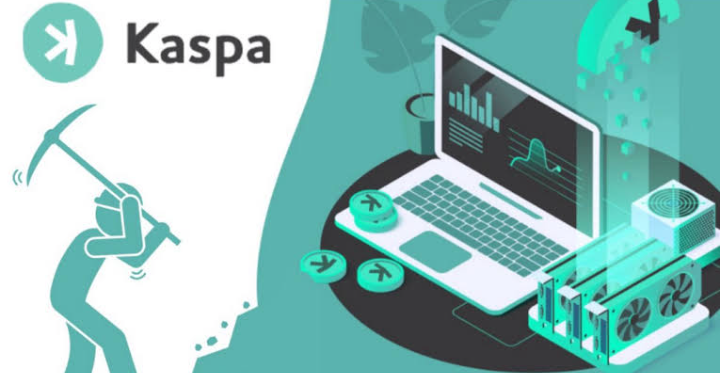How to Fix Common Kaspa Mining Pool Connection Issues
Mining Kaspa can be a lucrative investment, but it’s not without its challenges. One common problem is difficulty connecting to mining pools, which can reduce efficiency and result in missed payments. This guide covers how to troubleshoot and fix these issues to ensure smooth Kaspa mining operations.
What Are Kaspa Mining Pools?
Kaspa is a cryptocurrency that uses a unique algorithm for mining. Because mining is competitive, miners often join pools to combine their computing power, increasing the chances of finding blocks and earning rewards. The rewards are distributed based on each miner’s contribution to the pool.
Common Connection Problems
1. Network Problems:
- Signs: Frequent disconnections, slow response times, or low mining power.
- Causes: Unstable internet connections, network congestion, or router issues.
2. Wrong Setup:
- Signs: Inability to connect or mining software failing to detect the pool.
- Causes: Incorrect pool address, port, or login details.
3. Firewall Issues:
- Signs: Blocked or intermittent connections.
- Causes: Strict firewall settings or security software blocking mining activity.
4. Server Problems:
- Signs: Pool server is unreachable or slow.
- Causes: Server maintenance, overload, or downtime.
5. Hardware Issues:
- Signs: Sudden drops in mining power or loss of connection.
- Causes: Faulty network cards, loose cables, or overheating equipment.
How to Troubleshoot
1. Check Your Internet Connection:
- Test speed and stability using tools like ping or speedtest.net.
- Solution: Restart your modem/router, contact your ISP for assistance, or switch to a wired connection for better stability.
2. Verify Pool Setup:
- Confirm the pool’s address, port, and wallet details are correctly configured in your mining software.
- Check the pool’s website for accurate information.
3. Adjust Firewall and Security Settings:
- Ensure your mining software is added as an exception in your firewall or antivirus program.
- Temporarily disable overly strict security settings if necessary.
4. Check Pool Server Status:
- Visit the pool’s website or social media pages for updates on server issues.
- If the server is down, consider switching to an alternative pool.
5. Inspect Your Hardware:
- Secure all cable connections and check for signs of overheating.
- Replace faulty components such as network cards or cables.
6. Update Software:
- Keep your mining software and hardware firmware updated for optimal performance.
7. Optimize Network Settings:
- Configure port forwarding on your router for better connectivity.
- Use Quality of Service (QoS) settings to prioritize mining traffic.
8. Monitor and Log Activity:
- Enable logs to track connection issues and identify patterns.
- Use monitoring tools to oversee your mining rigs’ performance.
9. Leverage Community Support:
- Join forums or social media groups to get advice from experienced miners.
- Contact the mining pool’s support team if issues persist.
Advanced Tools for Troubleshooting
- Network Sniffers: Monitor network traffic for irregularities.
- Ping Tests: Check the stability and responsiveness of your connection.
- DNS Checks: Verify your system can resolve the pool’s address correctly.
- Bandwidth Testing: Identify network performance bottlenecks.
Specific Mining Software Issues
Different mining software may present unique challenges:
- bzminer: Ensure GPU settings are optimized to prevent constant reconnecting.
- lolMiner: Use a version compatible with your chosen mining pool.
- SRBMiner-Multi: Ensure system time matches the pool server’s time.
Handling Multiple Mining Rigs
- Use centralized monitoring software to track all rigs.
- Keep mining traffic separate from other internet usage to avoid interference.
- Maintain backup internet connections for redundancy.
Understanding Pool-Specific Requirements
Different mining pools have varying needs:
- Check their status pages for updates on maintenance or issues.
- Ensure your mining software supports the pool’s protocol.
- Choose a geographically close server for lower latency.
Security Tips
- Avoid sharing sensitive information publicly.
- Use secure connections and VPNs to protect data.
- Regularly update your software to guard against emerging threats.
Advanced Pool Configuration
1. Distributing Load Across Pools:
- Prevent downtime by configuring your software to use multiple pools.
- Example in bzminer:
bzminer -a kaspa -w -p stratum+tcp://pool1.com:3112 -p stratum+tcp://pool2.com:3112
2. Failover Plans:
- Automatically switch to a backup pool if the primary one fails.
- Example in SRBMiner-Multi:
-p stratum+tcp://primary_pool.com:3112 -p failover stratum+tcp://secondary_pool.com:3112
3. Pool Prioritization:
- Rank pools based on factors like hashrate, uptime, and rewards.
Troubleshooting Mining Updates
- Algorithm Changes: Ensure your software supports Kaspa’s updated mining algorithms.
- Network Issues: Be prepared for temporary connection problems during forks.
Dealing with High Latency and Packet Loss
- Use the traceroute command to identify bottlenecks.
- Test and adjust MTU settings for optimal performance.
- Contact your ISP if persistent issues arise.
Community and Environmental Considerations
- Mining Groups: Join communities for advice and shared experiences.
- Environmental Factors: Ensure your setup avoids electromagnetic interference and maintains stable temperature and humidity levels.
Legal and Compliance Issues
- Confirm your ISP’s mining policies to avoid throttling or blocks.
- Comply with local laws and regulations related to mining.
Proactive Monitoring and Maintenance
- Set up alerts for connectivity drops or hardware issues.
- Schedule regular maintenance and updates.
- Document your network configuration for easier troubleshooting.
Conclusion
Fixing connection issues with Kaspa mining pools requires attention to detail, from internet stability to software configuration. By addressing potential problems systematically, you can minimize downtime and maximize mining efficiency. Stay informed, leverage community resources, and keep your setup updated to succeed in Kaspa mining.


